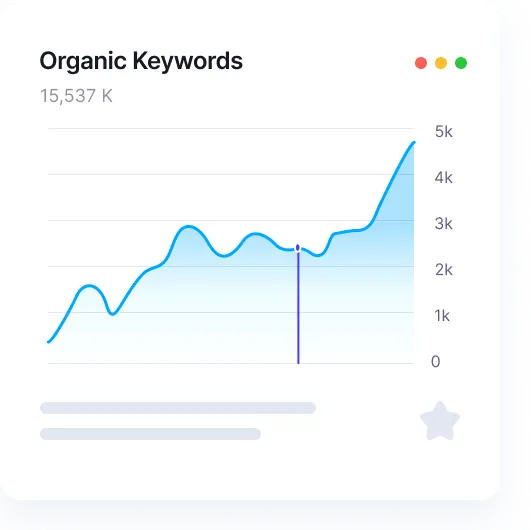

Unlike SEO, which builds over time, PPC drives traffic immediately. Within days of launch, you’ll be getting data, leads, and sales — which we can optimise further through continuous A/B testing and budget allocation.
Great for:

















Every decision we make is driven by data and research.
We start by reviewing your current marketing setup (if applicable), competitors, and keyword landscape to understand your goals, audience, and commercial objectives.
Using researched data, we craft a bespoke campaign strategy including: Keyword targeting, Ad group structure, Budget allocation & Channel selection.
Your ads go live across selected platforms. We track performance from day one — using conversion tracking and CRM integration to measure real results.
The first two weeks are the learning phase, then its about optimisation and scaling. Monthly reports detail our journey, and live dashboards allow you to see real time progress.








*Some projects delivered in collaboration with agencies during previous roles.
Book a free consultation to see if PPC is right for your goals.
Please reach out if you have any further questions.
PPC is one of the fastest marketing channels to generate traffic and leads — often within 24–72 hours of launching. Unlike SEO, which can take months, PPC gets your business in front of the right people immediately.
Yes — every click, impression, conversion, and cost is tracked. You’ll know your CPA (Cost Per Acquisition), CTR (Click-Through Rate), and ROAS (Return on Ad Spend) in real-time via a live dashboard and monthly reports.
Absolutely. You can start small, test what works, and scale once you’re confident in the ROI. Campaigns can also be dialled up or down instantly based on seasonality or demand. After all, having too many clients is a nice problem to have 😉
Yes — especially with Google Local Ads and geo-targeting. You can advertise to people within a specific radius, town, or region, making every pound count locally. This is excellent, as you don’t waste ad spend on consumers outside of your service area.
75% of users say paid search makes it easier to find information
63% of people are likely to click a Google Ad when shopping online
Aside from these statistics, it is probably the quickest lead generation method.
Not necessarily. While some industries are more competitive, budgets can be tailored. You can start with £499/month and build from there — the key is ensuring each pound is measured and optimised. Like the statistics say, every pound you spend, you should get £2 back – So I am also open to negotiating smaller packages. However, using tools I can see the average cost per click for a particular term, and I can calculate a monthly average cost of that to compete with the industry average, ideally, in order to guarantee results, we should meet that standard.
That’s why I start with a full audit and competitor analysis. I only recommend PPC if I believe there’s potential for positive ROI. Ongoing optimisation ensures underperforming ads are refined or removed.
Without proper setup, yes. But my campaigns include:
Without conversion tracking, you are essentially trying to shoot in the dark, there’s no way to find out if you hit your target or not. With conversion tracking, we will know exactly what is working (so we can dial down on) and also what is not.
Many DIY campaigns waste budget due to poor targeting, lack of strategy, or unoptimised landing pages. My approach is data-driven, with experience from over 168 successful campaigns, and backed by live reporting so you can see the impact for yourself.
PPC is ideal for immediate results, but it works even better alongside SEO and email marketing. Together, they build both instant and sustainable lead generation.
But it’s completely dependent on your business goals. As your business grows (which it’s my job to help do), so will your marketing goals. As the long-term strategies start to generate consistent growth, there is the potential to scale back on the PPC whilst the other strategies come into flow.
This ROI calculator helps you estimate how much revenue your marketing budget could generate based on your website performance and sales process.
Here’s what each part means:
Monthly marketing budget – How much you plan to spend on marketing (e.g. SEO, PPC, Paid Social).
Website traffic – How many visitors your website gets each month.
Website conversion rate – The percentage of visitors who generate leads or key events (fill out a form, call you, etc). Most websites convert between 2–5%.
Lead-to-sale conversion rate – The percentage of leads or key events that turn into paying customers. This varies by industry, but 10–30% is a common range.
AOV (Average Order Value) – The average amount each customer spends when they buy from you (we use this figure to estimate a profit based on your average customer).
Once you enter your numbers, the calculator shows:
Estimated leads – How many leads your website could generate.
Estimated sales – How many of those leads could convert into customers.
Estimated revenue – How much revenue that could generate.
ROI – Your return on investment, based on your budget and estimated revenue.
Prefer to message? Chat live now in the bottom corner.
Data-driven marketing to elevate the standards of internet marketing.